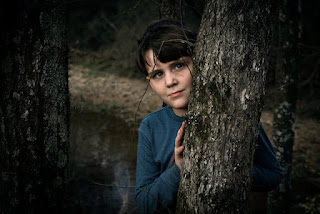"Happy families are all alike; every unhappy family is unhappy in its own way." - is the first sentence of Leo Tolstoy's masterpiece, Anna Karenina. And Tolstoy was right. The variety of nonintentional (and sometimes intentional) childhood wounding is, in a word, astounding. The tricky part? The more subtle the wound, the more it eludes us. Understanding where our intricate personality comes from becomes our little white whale, forever unattainable.
The wounds we carry are often undetectable, even under the inner microscope. It's a lingering sensation, more than a cognition. "Something's wrong." - but that's as deep as we go. And we let it pass. We bury it somewhere, in the farthest compartments of the mind. The thing is, as adults, we seldom have any recollection of the inflicted trauma. Trauma is an admirable sculptor, and sooner or later, its masterful hands will shape us. This is how childhood trauma can affect adulthood.
Unresolved trauma
So, what is childhood trauma, exactly? Adverse childhood experiences (ACE) or trauma can be described as an episode or a series of events, either witnessed or experienced by a child, that elicit distress and are by nature life-threatening, violent, and dangerous. A common misconception about childhood trauma involves presuming that the child would have to be the aggressor's primary target in order for trauma to fully develop. Well, wrong. The bystander role is as agonizing as being "the victim." And we're not talking about domestic violence, per se. (although amicable divorce is still rare and heated arguments can lead to physical aggression) Something as "little" as witnessing a loved one battling an illness or getting injured can be highly traumatic for children. What we fail to understand as adults is just how susceptible to shock and fear we once actually were.
Childhood trauma sources
According to the National Child Traumatic Stress Network (NCTSN), there are 12 common types of childhood trauma.
bullying (an act of inflicting physical, emotional, psychological, and social harm)
community violence (children who witness violence committed within their community)
complex trauma (refers to a series of traumatic events)
disasters (natural disasters involving earthquakes, hurricanes, tornadoes, extreme drought, wildfires, etc.)
early childhood trauma (traumatic experiences in children under 6 years of age)
medical trauma (involves illness, medical procedures, hospitalization)
physical abuse (parents or caregivers causing physical pain - neglect, kicking, slapping, hitting)
refugee trauma (fleeing causes emotional uncertainty)
sexual abuse (or "betrayal trauma" is committed by an adult or an individual older than the child)
terrorism and violence (witnessing shootings, bombings)
traumatic grief (death of a loved person)
Mental health issues are linked to childhood trauma
Adult individuals who were exposed to any type of childhood trauma are more likely to develop mental health disorders, such as anxiety, depression, substance abuse, eating disorders, and other common issues. Individuals who were abused, neglected (or witnessed their loved ones being victimized), and who failed to seek proper treatment in their adult years tend to struggle in their professional and personal life. Poor stress management skills lead to hindered careers, toxic interpersonal relationships, and, inevitably, auto-collapse.
Such individuals are more likely to use alcohol, food, drugs, and other substitutes as coping mechanisms. Addiction treatment experts from Harmony Ridge Recovery Center advise: childhood trauma is often the initial substance abuse trigger. Seeking professional help is of paramount importance. The sooner the individual faces the underlying cause(s), the sooner they can get their life back.
Childhood trauma affects personal relationships
Childhood trauma can affect adulthood by obstructing healthy relationship patterns. How? The survivors of childhood trauma tend to foster a distorted self-perception; low self-esteem and low levels of self-love can cause individuals to view themselves as undeserving of loving, caring, supportive, healthy relationships. The little voice inside screams: "You don't deserve them. You're unworthy of their love." And that brings us to adult attachment disorders.
Adult attachment disorder
AAD is a behavioral disorder that affects an individual's ability to form and maintain relationships. Children whose familial dynamic is healthy, supportive, and full of love grow up to be secure adult individuals who are able to form and constructively develop personal relationships; contrastingly, a familial dynamic riddled with threats, pain, and tragedies forms an insecure adult individual, who will consequently suffer from an empiric inability to form healthy bonds. Types of insecure attachment styles include:
Anxious-Preoccupied Attachment
The adult will appear clingy and needy and will constantly pursue validation in romantic relationships. The perpetual insecurity stems from a "hot and cold" parenting style, meaning parents could not exhibit emotional consistency, thus leading to a lack of emotional security. (episodes of rejection, followed by intense care and affection, leaving the child to question their position) Adults who require constant validation in relationships are likelier to develop an addiction. By using cognitive behavioral therapy (CBT) for addiction recovery, they can overcome negative thought patterns and alleviate insecure attachment style symptoms.
Fearful-Avoidant Attachment
(Also known as "Disorganized") A fearful-avoidant person is both anxious and dismissive. Those with this insecure attachment style deeply crave close relationships but cannot trust the person they want to let in. The fear of intimacy is a direct result of neglect or childhood abuse. This style is considered to be the least common and also the most complex of the three. Much like the dismissive-avoidant type, these individuals will often distance themselves from their partners, but unlike dismissive individuals, they will experience grave anxiety and neediness regarding their partner's love.
Dismissive-Avoidant Attachment
This type of attachment is usually the result of childhood needs not being met by the child's caregiver or parent. Rejected and ignored, the child will grow into an overly independent individual who might reject others and ward off potential threats to their vulnerable apparatus. (i.e., love) This unhealthy coping mechanism serves its purpose; it protects the individual from being hurt again. Therapy is advised for all individuals with an insecure attachment style—small steps to living a happier life.
Closing thoughts
It is true childhood trauma can affect adulthood, but only if we leave it unaddressed. Our happiness rides on our ability to accept ourselves for what and who we are, trauma or no trauma. It's time to do the work. Don't let it win.




No comments:
Post a Comment